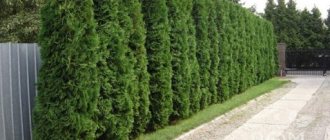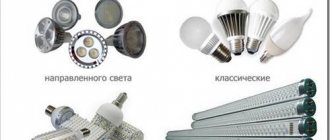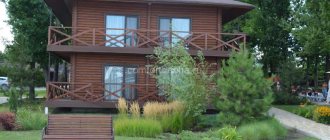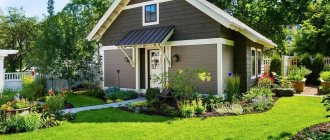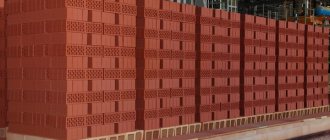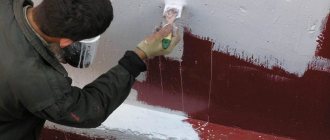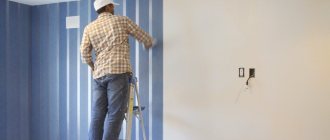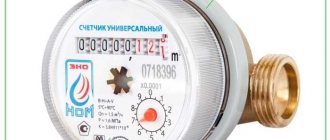One of the most common ways to decorate a garden plot is to decorate it beautifully with flowerpots and pots. Outdoor flowerpots can be of completely different shapes and materials, and their decor can successfully complement the garden composition.
1.
2.
3.
4.
5.
6.
Wooden
The dacha is a place of maximum unity with nature, so everything natural here looks especially harmonious.
Benches, gazebos, and flowerpots made of wood fit confidently into the landscape of any site. From wooden slats you can make small flowerpots for annuals or spacious boxes for planting lush bushes and trees. The shape is usually chosen to be simple: rectangular, round or square. It is customary to leave the wood texture, covering it with a protective layer of impregnation and varnish.
Clay
Clay is the ideal backdrop for almost any flower. The noble brown or beige shade of the flowerpot is in harmony with both greenery and multi-colored petals. The form, as a rule, is chosen to be simple. A highlight can be added using spectacular glazes during firing. Some will give the pot additional shine, others - dullness, and others - a cracking effect.
Nemesia
The cheerful little flowers provide joy all season long with tons of vibrant colors, including purple, pink, cranberry, bright yellow, pale yellow, orange and white. The plant is usually considered an annual.
Place: partial shade.
Interesting varieties: Berries and Cream, Deep Orange (Sunsatia Kumquat).
Sunsatia Kumquat
Berries and Cream
Homemade
Today, garden crafts made from old tires and worn-out shoes will surprise few people. When decorating a garden, summer residents are showing more and more creativity. An ordinary plastic bucket is often used as the basis for the vessel; shells, clothesline, woolen threads, dry branches, etc. are suitable for decoration. The skills of decoupage, hand painting, and sculpting will come in handy.
Using old interior items or wardrobe items to create designer flowerpots may also be appropriate, but completely “killed” items should be discarded.
Containers of unusual shapes
To highlight the beauty of flowers, the shape for flowerpots is often chosen to be simple and concise. You can give free rein to your imagination by buying a pot for non-flowering plants (conifers or succulents). Originality can be added in several ways:
- Playing with geometric lines and planes.
- Using animalistic themes and the idea of physicality.
- Experimenting with sizes and proportions.
Pansy (Viola x wittrockiana)
Pansies, widely loved for their cute faces, prefer cool weather and will thrive in spring or fall gardens. A partially shaded location will provide them with the cooler conditions they prefer and should keep them blooming from spring through summer. With flowers ranging from 5 to 10 cm in diameter and an overall height of only 25 cm or so, pansies produce many flowers for their compact size.
Flowerpots made of stone
Natural stone in landscape design always looks noble and expensive. Products made from granite, onyx or marble are compatible with most natural materials and are durable and strong. Stone bowls often crown columns and decorate garden fountains and fences.
Of particular note are the marble and granite flowerpots on pedestals, which are highly decorative and luxurious. They fit perfectly into the design of sites in a classic European style. In small dachas, such a design would be inappropriate, but for country houses with a large garden it would be ideal.
A selection of varieties of the best “potted” flowers
When composing flower arrangements, plants are used that differ in bud color, height, splendor and stem type. Two or three types are planted in large flowerpots, with taller flowers (focal) in the center, two times lower along the edges (edging or background), and curly, cascading flowers around the circumference or perimeter.
If the container is near a wall, then taller plants are planted along the back wall, low or hanging plants are planted closer to the front edge. Let's take a closer look at which flowers are best planted in flowerpots rather than in flower beds.
Focal flowers - in the central space
Unpretentious, wildly blooming pelargonium, more familiar to everyone as geranium, pleases with a rich range of shades - from soft pink to deep burgundy. It is propagated by seeds and cuttings, but seedlings take root and grow better. During the summer, it is enough to feed with humates 2-3 times.
You can learn about why geraniums may stop blooming and how to fix it from the material:
Pelargonium easily tolerates frosts down to -3°C, but during cold spells it is better to cover flowerpots with plants at night with Agrospan.
Double and semi-double asters bloom thickly and for a long time. Dwarf and medium-sized varieties with a height of 15 to 50 cm are more suitable for flowerpots. They love the sun very much, so it is better to place containers on the south side.
You can sow aster seeds in the spring, but then they will bloom in late August-September, or in October - the flowers will bloom in June
Annual dahlias have a small height - from 20 to 50 cm, just suitable for creating compositions in flowerpots and containers. They look equally good both in group plantings and in single plantings. By using dahlias of different shades, you can get a picturesque bush to decorate your porch.
A garden gerbera can become a real decoration of the garden. The climate of central Russia is not suitable for year-round cultivation of this flower in open ground, but it is perfect for a mobile flowerpot:
If you plant dahlias in April, they will delight you with their bright colors from July until frost.
“Background” varieties - to create a border
Pansies are often called viola or violet. These are delicate, colorful plants 15-25 cm tall. They are great for framing taller plants in a large pot or creating a separate composition.
Recent Entries
Lilac perennials that are beautiful, compact and do not crowd out other plants Why when buying seedlings you should not take the sellers’ word for it and how to determine the age of the plant using 3 signs Tomato seedlings have turned purple or whitish: why the color has changed and how to save the plants
Pansies bloom throughout the summer. They are borders, so they are equally good for decorating flower beds, flowerpots, and balconies.
White, lilac, violet, burgundy ageratum serves as a lush frame for asters and dahlias. Taller plants (up to 30 cm) can be used to create contrasting compositions planted in different pots. Ageratum is not afraid of drought, but it does not like shade.
Ageratum seeds ripen at the end of summer, so they should be collected immediately as soon as the inflorescences turn brown.
Iberis blooms in May-June, so by mid-summer you can prepare other flowers to replace it. This is a lush plant, so seeds should be planted at 15 cm intervals. It loves the sun, but blooms just as well in the shade. Read more about landing.
More often than other varieties, umbrella iberis is used, which is excellent for decorating rock gardens, rockeries, balconies, porch steps and verandas.
Delicate white-yellow flowers of limnanthes look like little suns that illuminate everything around and give a great mood. A flowerpot or hanging basket with this neat plant will decorate your porch or balcony. Limnanthes is good as a background for bright focal plants in red or blue.
More information about limnantes varieties and caring for them can be obtained from the material: https://diz-cafe.com/rastenija/limnantes-vyirashhivanie-iz-semyan.html
Limnanthes seeds are planted in open ground, but earlier flowering can be achieved by preparing seedlings in the spring in a greenhouse
Hybrid verbena up to 30 cm high is also ideal for decorating flowerpots. Red and blue carnation-shaped flowers often have a white spot in the middle, making the bush look colorful and lively. Short shoots are good for creating straight bushes, long shoots are good for creeping compositions.
Verbena is great for planting in flowerpots, and with other flowers - pansies, ageratum - it creates classic purple-blue compositions
Falling and curly
Petunia is perhaps the most popular flower for decorating balconies and verandas. The variety of shades, from snow-white to deep purple and bright red, allows you to create incredibly beautiful compositions even without the use of other plants.
Petunia blooms throughout the warm season with lush caps. To make the plant look fresh, dry faded buds must be removed in a timely manner.
Various varieties of fuchsia are wonderful flowers for flowerpots in the country. Hanging and trailing plants create amazing combinations of red or pink. Hybrid fuchsia varieties are preferred for decorating balconies and gazebos.
The varietal diversity of fuchsia allows you to experiment with plants of different heights and colors. The varieties Marcus Graham, Sarah Jane, Summer are very beautiful
The bright cornflower blue flowers of lobelia pair harmoniously with blue or white focal plants. Blue is the most common color, but you can find white, purple and even red varieties that are used to create plain frames.
You can learn more about how to grow lobelia from the material:
Lobelia is one of those few flowers that tolerate transplantation well even during flowering, while its decorative qualities do not suffer
Sunny and positive nasturtium will not only decorate the facade of a house or a road curb, but will also replenish the first aid kit and even protect against pests. The plant is so unpretentious that it is one of the favorite flowers used for growing in the middle zone and in the north.
The length of nasturtium shoots reaches 2 meters, so it is used to create “blooming” walls, planted in flowerpots at the top of the house facade
Scaevola is suitable not only for flowerpots and containers - it is a ground cover plant that creates beautiful annuals. Among the other species, Scaevola pleasant stands out - a delicate plant with fan-shaped flowers of lilac color.
It is also worth paying attention to the delicate, profusely blooming brovallia. You can learn how to care for this flower from the material:
Scaevola grows very quickly, so to give it a neat shape you need to trim long shoots and pinch their tops
Concrete planters and pots
Concrete is not afraid of exposure to the sun and precipitation, easily takes the desired shape and does not emit toxic substances. It is actively used for making flower pots, boxes and pots for country houses and private homes.
You can make a concrete vase with your own hands by pouring the solution into a pre-prepared form. The basis is any available material:
- Textile;
- Plastic containers;
- Carton boxes;
- Wooden box;
- Glass containers, etc.
We put fun thoughts into action
Before the holidays, we present original flowerpots for friends:
- For collectors of rare species of cacti, you can implement the idea of using plastic egg trays as flower pots. We place rare species of cacti and succulents in pots in the cells, creating a composition. The mini-kindergarten can be attached to the wall using wire.
- We wrap a regular hanging pot for plants in colored foil, which will sparkle with radiance under electric lighting.
- We decorate the container with shining LEDs. We hide the battery and wires inside the flowerpot, having previously protected it from moisture.
- Flashlight. We decorate the inside of a glass vase or jar with pine cones, pine branches, dried flowers, and lace. We hide a flashlight among the decor. We place a pot with plants from top to middle, just make sure that water does not get on the composition. Periodically pour out the moisture from the pot. All you have to do is attach it to the holder, creating a spectacular night light.
VIDEO: Master class for creating flowerpots with your own hands
Flower pots
Do it yourself
Mobile flowerpots
Garden wheelbarrows, tubs on wheels, a decorated old bicycle with containers instead of a seat - a simple and rational solution for organizing a flower garden. The flowerbed can be rolled under a canopy in case of heavy rain or hail, or, conversely, the plants can be taken out into the bright sun to take ultraviolet baths. The wheels are attached to the base of the flowerpot or to the platform on top of which the container is placed.
Impatiens walleriana (Impatiens walleriana)
Impatiens blooms beautifully in shady places. (Waller's impatiens species do well in partial to full shade, but should not be confused with Hawker's impatiens, which require more sun than their variegated cousins. Impatiens tend to wilt dramatically if moisture is insufficient, but usually recover quickly from collapse. when they replenish the lack of water.
Mosaic decoration
Mosaic is quite common in the design of garden spaces. It decorates paths, gazebos and, of course, flower pots. It is almost impossible to make two exactly identical mosaic containers, so with a little diligence and creativity, you can create a unique element of garden decor. The material will be multi-colored glass, broken ceramic tiles, small stones.
Ethnic flavor
Flowerpots with national paintings and stucco will help create the atmosphere of a Japanese garden or a Russian estate. The basis is a plastic or ceramic pot, coated with acrylic primer and a layer of paint.
You can decorate the entire surface of the vase with painting or a three-dimensional ornament or highlight a small edging along the upper edge.
Illuminated flowerpots
Minimalistic models made of plexiglass or plastic with LED backlighting not only decorate the landscape, but also solve the problem of lighting the area in the evening. They are placed near the porch, along paths or near the recreation area. The changing color of the lighting helps create a romantic atmosphere for evening walks or a bright backdrop for parties.
Begonia (Begonia spp.)
Many species of the begonia family are suitable for growing in containers, including the Rex begonia species, which is loved for its striking, royally colorful foliage. Tuberous begonias produce huge, frilly "puffy" flowers, while waxy types produce many smaller flowers over the course of several months. Begonias like rich soil, high humidity and shade.
Hanging flowerpots
The easiest way to place fresh flowers on the terrace, veranda and open summer kitchen is in hanging structures. They don't get in the way, but create the necessary comfort.
Suspensions are made of metal chains, plastic rods or woven threads. In addition to the usual ceramic pots, the most creative gardeners use halves of coconuts, lamps, large shells and even handbags to place climbing flowers.
Wicker flowerpots
Products made from rattan, jute and willow have gained popularity due to their lightness and practicality. They are unpretentious to care for, deform only under prolonged mechanical impact and get along in almost any garden space.
Wicker flower pots of various shapes and sizes often decorate porches, gazebos, and patio areas.
When choosing flowerpots for the garden, it is not necessary to follow complete uniformity; you can group flower containers that are similar in texture or materials. Plain flowerpots are placed next to painted ones. Focus on your preferences and then your garden will sparkle with new and unique colors.
Caladium (Caladium bicolor)
With spray-painted leaves, shaped like arrowheads, and a height not exceeding half a meter. Caladiums are a great solution when it comes to decorating dark corners of the garden. Also called angel wings, most caladiums prefer partial to full shade. Because they grow well at temperatures above 15°C, they are best grown in warm climates.
Pet owners, beware: caladium is toxic to both cats and dogs.
